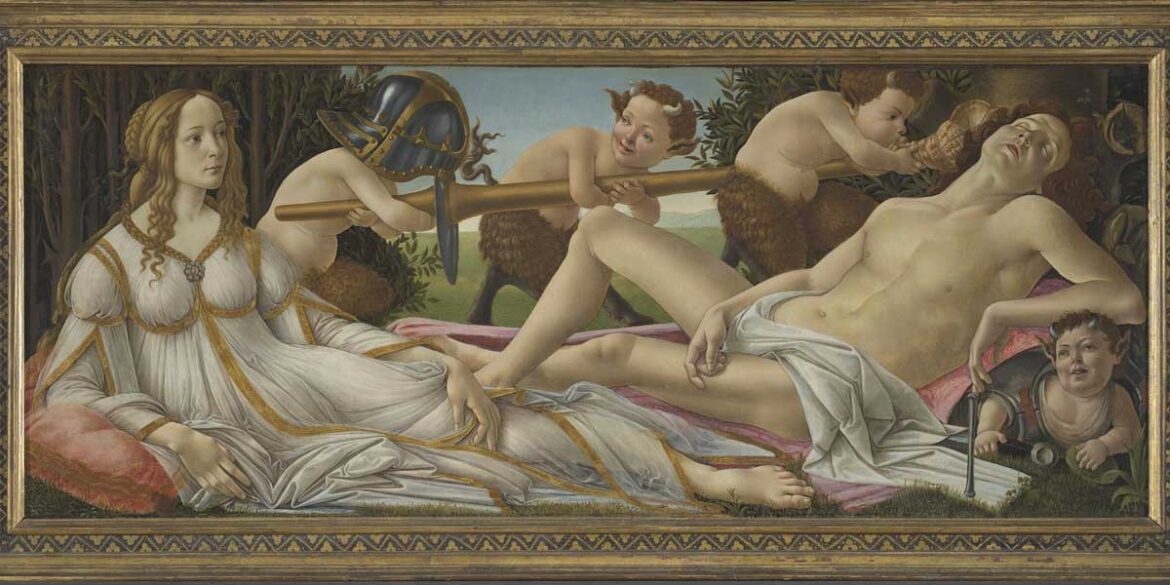The Travelling Masterpiece
Join us as Botticelli’s Venus and Mars makes its temporary home at the Fitzwilliam Museum. Delve deeper with the display’s co-curator, Kate Noble
An icon of the Renaissance era, created circa 1485, Sandro Botticelli’s celebrated painting Venus and Mars has not left its home in London’s National Gallery since its original acquisition in 1874.
Now, as the gallery celebrates its 200th anniversary, the painting is being lent for the first time ever. “We’re very excited to be hosting this extraordinary painting,” introduces Kate Noble, co-creator of the new display National Treasures: Botticelli in Cambridge. The display will open in the Fitzwilliam Museum’s Octagon Exhibitions gallery
later this month.
Venus and Mars is originally thought to have been commissioned for a bedchamber as part of a wedding celebration, and was therefore intended for both male and female audiences.
Portraying the love affair between the ancient deities Mars and Venus, it draws from Ovid’s Metamorphoses – a body of work which would have been familiar to people of 1400s Italy. “Botticelli seemingly depicts the moment before the couple are caught by Venus’ husband Vulcan,” Kate explains. “The juxtaposition of a clothed woman with a naked man was unusual in the art of this time, where the reverse was more often found.”
Rather than appearing in isolation, the painting is to be displayed alongside three other works from the museum’s Renaissance collection, encouraging new thinking about its original setting, viewers and meaning. “The display creates a space of contemplation for a wider audience than perhaps these pieces normally reach. It will invite new, sometimes complex or contradictory readings and perspectives,” continues Kate.
The works included reflect the rebirth of the philosophies and values of ancient Greece and Rome that occurred in Italy throughout the 15th and 16th centuries, creating a taste for works of art inspired by classical poetry and myth.
This movement led to a reintroduction of images of nude bodies into domestic spaces. Joining Botticelli’s work are two other objects depicting nudity across the sexes – a statuette of Apollo and a maiolica plate – both of which belonged to a female patron and connoisseur of the arts, Isabella d’Este. “The statuette would have been displayed in her study-treasury and the plate on her dining table. Elsewhere, we also have the Titian painting Venus and the Lute Player – which would have been commissioned by a wealthy patron and displayed in a private picture gallery.”
All four works were likely intended as conversation pieces for both men and women when they were originally displayed, but it is the discussions they spark today – some 500 years later – that are the preoccupation of Kate and her team. “Our approach is inspired by our wish to combine traditional art, historical expertise and knowledge with the findings of our participatory research programme,” she says. “We would like visitors to pause, look, learn and immerse themselves.”
National Treasures: Botticelli in Cambridge is on display at the Fitzwilliam Museum from 10 May to 10 September.

